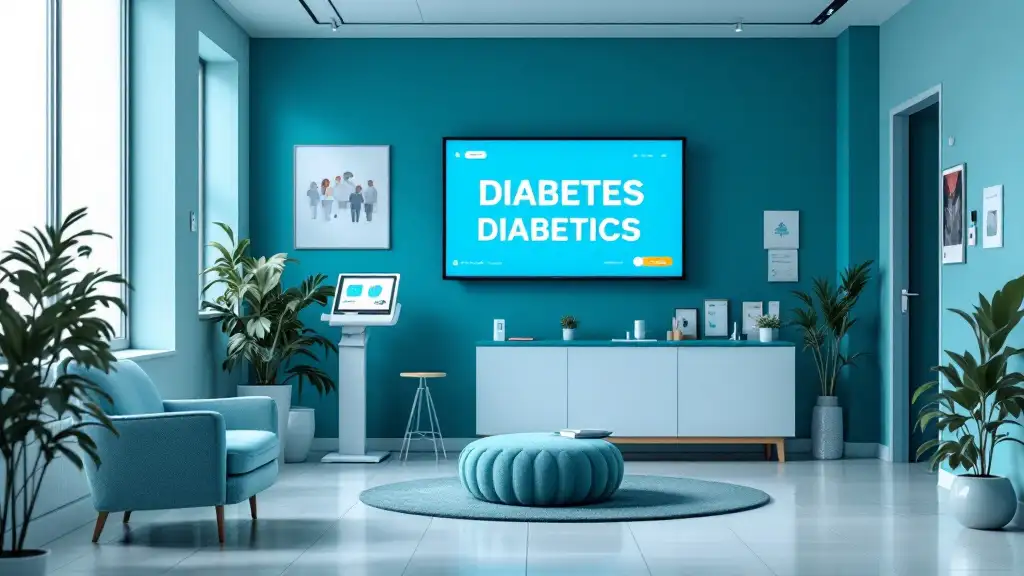Introduction to Telehealth in Chronic Disease Management
In the evolving landscape of healthcare, telehealth has emerged as a pivotal tool in managing chronic diseases. By extending care beyond traditional clinical settings, telehealth offers continuous, accessible, and personalized support for patients with conditions such as diabetes, hypertension, and heart failure. Its integration into routine care not only enhances disease control but also improves quality of life for vulnerable populations facing barriers to in-person visits.
Overview of Telehealth Services for Chronic Disease Management
 Telehealth services for chronic disease management are designed to offer continuous, accessible healthcare outside the traditional clinical environment. They leverage various technological methods to connect patients and providers, ensuring ongoing care and support.
Telehealth services for chronic disease management are designed to offer continuous, accessible healthcare outside the traditional clinical environment. They leverage various technological methods to connect patients and providers, ensuring ongoing care and support.
These methods include live video appointments, asynchronous communication, such as secure messaging and sharing health logs, and remote monitoring devices that track vital signs like blood pressure, glucose levels, and weight.
A broad range of conditions benefit from telehealth, including diabetes, hypertension, rheumatoid arthritis, respiratory diseases like COPD, and even cancer. Patients often use self-monitoring tools like blood glucose meters, blood pressure cuffs, and pulse oximeters to collect real-time health data.
Engagement strategies such as educational text messages, goal-setting web content, and interactive platforms enhance patient involvement. These tools help improve medication adherence and promote healthier lifestyle choices.
Research shows that telehealth can significantly impact clinical outcomes by better managing blood pressure, blood sugar levels, and medication adherence. It encourages proactive self-management and early intervention, reducing hospitalizations and emergency visits.
In summary, telehealth plays a crucial role in personalized chronic disease management, combining technology and patient engagement to improve health outcomes and quality of life.
| Method of Delivery | Conditions Treated | Patient Engagement Tools | Potential Benefits |
|---|---|---|---|
| Live Video Appointments | Diabetes, Hypertension, Rheumatoid Arthritis | Educational messages, goal-setting platforms | Improved disease control, medication adherence, convenience |
| Asynchronous Communication | COPD, Cancer, Neurological Disorders | Secure messaging, health logs uploads | Flexible monitoring, enhanced patient-provider communication |
| Remote Monitoring Devices | Heart failure, diabetes, respiratory diseases | Wearables, home blood pressure monitors | Early detection of issues, reduced hospitalizations |
This integrated approach aims to optimize chronic disease management, especially for vulnerable populations, by providing timely, personalized care remotely.
Types and Applications of Telehealth Interventions

What are the types and applications of telehealth interventions for managing chronic illnesses?
Telehealth offers various methods to support ongoing care for chronic disease patients. The primary types include live (synchronous) videoconferencing, where patients and providers interact in real-time through video or audio calls. This allows for immediate consultations, medication adjustments, and health discussions.
Another form is asynchronous (store-and-forward) communication, where patients send health data, logs, images, or secure messages that providers review later. This method is useful for routine follow-ups, test result explanations, and ongoing education.
Remote patient monitoring (RPM) involves devices that track vital signs like blood sugar, blood pressure, pulse oximetry, and weight. Data from these devices are transmitted to healthcare providers for continuous assessment, enabling early intervention and better management of conditions like diabetes and hypertension.
Mobile health (mHealth) applications and features include text messaging for medication reminders and disease education, web-based content for goal-setting, and interactive modules that allow patients to send health data or logs to their care team.
Additionally, provider-to-provider telehealth facilitates professional collaboration and mentorship, enhancing care quality through shared expertise.
These diverse telehealth interventions are particularly effective for managing conditions such as diabetes, cardiovascular diseases, COPD, and mental health issues. They support medication adherence, behavioral change, and disease monitoring, leading to better clinical outcomes.
Research and systematic reviews confirm that these telehealth approaches can reduce hospital readmissions, improve blood pressure and blood sugar control, and increase access to specialized care, especially for rural or underserved populations.
In summary, telehealth methods are adaptable to various patient needs and conditions, combining technology and personalized care to improve health outcomes while reducing healthcare costs.
Evidence Supporting Telehealth Effectiveness
Numerous research studies and systematic reviews validate the positive impact of telehealth on managing chronic diseases. These studies show substantial improvements in clinical outcomes such as blood pressure, blood sugar levels, medication adherence, and overall disease control.
Meta-analyses highlight that patients utilizing telehealth interventions, including remote monitoring and virtual consultations, experience fewer hospitalizations, readmissions, and better survival rates, especially in conditions like heart failure, diabetes, and cardiovascular diseases.
Specific benefits include improved blood pressure management—often achieved through home blood pressure monitoring combined with telehealth support—and enhanced glycemic control reflected by lowered HbA1c levels for diabetes patients. Evidence consistently points to reductions in emergency visits and hospital stays, illustrating telehealth’s role in reducing healthcare costs and improving resource utilization.
Telehealth also contributes to increased access to care, breaking down barriers such as transportation challenges and geographic limitations. During the COVID-19 pandemic, telehealth adoption surged, demonstrating its capacity to deliver continuous, effective care remotely.
Overall, research underscores that telehealth not only supports better disease management but also offers a cost-effective solution that broadens access, improves patient engagement, and enhances health outcomes across diverse populations.
Technologies and Tools Used in Telehealth
 In telehealth for chronic disease monitoring and management, a broad range of technologies and tools are utilized to enhance patient care remotely. One of the most prominent categories includes devices for remote patient monitoring, such as blood pressure cuffs, blood glucose meters, pulse oximeters, and weight scales. These devices are often connected via the Internet of Things (IoT), allowing for real-time data transmission through sensors and wearables, which facilitates continuous health tracking.
In telehealth for chronic disease monitoring and management, a broad range of technologies and tools are utilized to enhance patient care remotely. One of the most prominent categories includes devices for remote patient monitoring, such as blood pressure cuffs, blood glucose meters, pulse oximeters, and weight scales. These devices are often connected via the Internet of Things (IoT), allowing for real-time data transmission through sensors and wearables, which facilitates continuous health tracking.
Wearable devices like ECG monitors and fitness trackers actively collect vital signs and activity data. This information can be integrated into patient health records and analyzed using AI-supported models to predict potential health issues before they become critical.
Mobile health (mHealth) applications play a crucial role in supporting patients daily. These apps assist with medication reminders, dietary goal-setting, and tracking lifestyle changes, thereby fostering better adherence to treatment plans and healthier behaviors.
Secure patient portals enable patients and healthcare providers to communicate efficiently. Features include reviewing test results, scheduling appointments, and exchanging health information securely, which boosts patient engagement.
Virtual consultation platforms include live videoconferencing, store-and-forward systems, and even audio-only calls. These tools allow healthcare providers to conduct follow-up visits, collaborate across specialties, and manage complex cases without requiring in-person visits.
The integration of advanced digital tools like activity trackers, remote sensing devices, and AI-driven analytics collectively supports ongoing chronic disease management. These technologies improve clinical outcomes by enabling early intervention, increasing patient involvement, and expanding access to healthcare services beyond traditional settings.
| Devices & Tools | Description | Functionality and Impact |
|---|---|---|
| Blood pressure cuffs | Measure blood pressure remotely | Improved blood pressure control, early detection of hypertensive episodes |
| Blood glucose meters | Track blood sugar levels | Better diabetes management via real-time data sharing |
| Pulse oximeters | Measure oxygen saturation | Monitoring respiratory health, especially in COVID-19 cases |
| Wearables | ECG, activity, fitness trackers | Continuous health status assessment, early warning signals |
| mHealth apps | Goal-setting, medication reminders | Support adherence, behavioral changes |
| Secure messaging portals | Private communication with providers | Constant engagement, timely intervention |
In summary, modern telehealth utilizes a combination of connected devices, mobile applications, and virtual communication platforms to provide comprehensive, continuous, and tailored monitoring and management of chronic diseases. These advances continue to evolve, promising better health outcomes and more accessible care for diverse patient populations.
Benefits and Best Practices of Telehealth at Home
 Telehealth has become a vital component in managing chronic conditions efficiently and comfortably at home. Its benefits include improved access to healthcare services, which is especially important for rural or vulnerable populations who face barriers like transportation or mobility issues.
Telehealth has become a vital component in managing chronic conditions efficiently and comfortably at home. Its benefits include improved access to healthcare services, which is especially important for rural or vulnerable populations who face barriers like transportation or mobility issues.
Patients enjoy increased convenience, as telehealth reduces the need for travel and waiting times, creating a more patient-centered approach. Regular virtual check-ins and remote monitoring foster better disease management, encouraging adherence to treatment plans and enabling early detection of health issues.
To maximize these benefits, healthcare providers emphasize patient education on technology use and data security. Patients should understand how to operate devices like blood pressure monitors or glucose meters and be aware of privacy practices to protect their health information.
Consistent remote monitoring of vital signs such as blood pressure, blood sugar, pulse oximetry, and weight allows for ongoing assessment and timely interventions. This proactive approach can reduce hospitalizations and improve outcomes.
Employing various telehealth modalities— including live video visits, asynchronous messaging, mobile health applications, and phone calls—tailors care to individual needs. For example, video appointments are perfect for follow-ups or behavioral care, while secure messaging helps in sharing health information on-demand.
Implementing these strategies involves advanced provider collaboration through tele-mentoring and leveraging evidence-based practices. Overcoming barriers like digital literacy, particularly among older adults, is crucial for ensuring equitable care. Combining education, technology, and flexible communication methods enables a comprehensive, patient-focused telehealth program at home.
Future Trends and Innovations in Telehealth
 Emerging advancements in telehealth are poised to transform the landscape of chronic disease management significantly. One of the prominent trends involves the integration of artificial intelligence (AI) and machine learning, which will enhance predictive analytics and support personalized treatment plans. These technologies can automate clinical documentation, identify early warning signs, and generate tailored interventions, making care more efficient and precise.
Emerging advancements in telehealth are poised to transform the landscape of chronic disease management significantly. One of the prominent trends involves the integration of artificial intelligence (AI) and machine learning, which will enhance predictive analytics and support personalized treatment plans. These technologies can automate clinical documentation, identify early warning signs, and generate tailored interventions, making care more efficient and precise.
Remote monitoring devices, including wearables and sensors, are expected to become more sophisticated, providing real-time data on vital signs such as blood glucose, blood pressure, and heart rate. Coupled with AI, these tools enable proactive and personalized healthcare, especially for conditions like diabetes, cardiovascular diseases, and mental health issues.
Advances will also include the integration of telehealth platforms with electronic health records (EHRs) and emerging blockchain technologies. This seamless data sharing improves care coordination, enhances transparency, and addresses security concerns.
The expansion of hybrid models combining in-person and virtual care is on the rise, along with the development of digital therapeutics—evidence-based interventions delivered via digital platforms. These approaches offer flexible, patient-centered options for ongoing management.
Furthermore, the growth of telemedicine services will extend to broader access to specialists through virtual consultations, reducing barriers for rural or underserved populations. Innovations such as virtual and augmented reality, combined with 5G connectivity, will support remote diagnostics, immersive patient education, and virtual rehabilitation.
In summary, future telehealth developments aim to leverage advanced technologies to improve health outcomes, foster greater patient engagement, and create flexible, secure, and efficient care systems adaptable to diverse needs.
The Transformative Role of Telehealth in Chronic Care
As telehealth continues to evolve through technological advancements and increasing integration into healthcare systems, its role in managing chronic diseases becomes even more vital. The combination of innovative tools, evidence-based interventions, and patient-centered approaches promises not only to improve clinical outcomes but also to make chronic disease management more accessible, efficient, and personalized. Embracing these innovations will be key to shaping a future where high-quality, continuous care is available to all, regardless of geographic or socioeconomic barriers.
References
- Managing chronic conditions through telehealth
- Telehealth Interventions to Improve Chronic Disease
- Chronic Disease Management at Home
- Remote Monitoring Systems for Patients With Chronic ...
- Telehealth and Chronic Care Management
- Telemedicine can revolutionize the treatment of chronic ...
- Telemedicine application in patients with chronic disease
























































































.png)